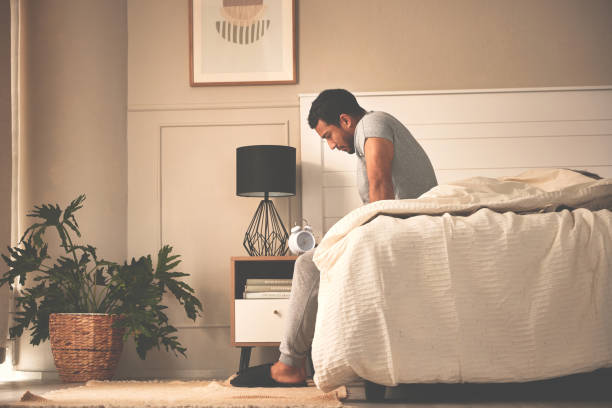Introduction

Psychologists and designers have long recognized the impact of colors on our emotions and well-being. From vibrant reds to soothing blues, each color has the power to evoke specific moods and influence our mental state. However, recent studies have shed light on a potential connection between the colors we surround ourselves with, particularly in our bedding choices, and Parkinson's disease.
This blog post discusses color psychology and examines if there is a link between bedding colors and Parkinson's disease symptoms. Can choosing different bed sheets impact the lives of people with this type of brain disease? Let's explore this fascinating topic and uncover the potential relationship between bedding color psychology and Parkinson's disease.
What is color psychology?
The field of color psychology aims to understand how colors impact our moods and actions. It attempts to understand how colors affect our mood, thoughts, feelings, and decision-making. Color psychology is an important tool in many fields, including marketing, design, and healthcare.
How can colors influence emotions and mood?
Color psychology has long been studied to understand how colors can influence emotions and mood. It is believed that certain colors can evoke different responses in people, which can affect their behavior and feelings. For instance, bright colors like red are often associated with excitement and energy, while softer shades like blue are known to be calming and soothing. In recent years, there has been an increased interest in studying the connection between color and health.
One area of exploration is the potential connection between bedding colors and Parkinson's disease. While research on this topic is still relatively new, some intriguing findings suggest that certain colors may impact people with Parkinson's differently than those without the condition.
A study conducted in Japan discovered that the color of bedding can affect the symptoms experienced by Parkinson's patients. It was observed that those with blue and green bedding experienced improved motor function, while those with yellow or orange showed increased tremors. Similarly, another study discovered that people with Parkinson's had better sleep quality when they used dark or neutral colors for their bedding.
The findings imply that a correlation may exist between color psychology and Parkinson's disease. Although further research is necessary, it is possible that particular colors can affect the emotions and abilities of individuals with this condition. As such, clinicians should consider incorporating color psychology into their treatment plans to help manage.
The Connection Between Color and Parkinson's Disease

The exact cause of Parkinson's disease is unknown, but recent research suggests a possible connection between this condition and certain colors. Color psychology studies how color affects our emotions, thoughts, and behaviors. It has been suggested that certain colors may impact diseases such as Parkinson's disease.
Studies show that Parkinson's patients frequently report feeling calmer in the presence of certain colors, particularly green and blue. Using these colors can have a calming effect on the central nervous system, which may potentially aid in reducing tremors related to Parkinson's disease. Also, patients were found to have increased positive moods when exposed to these colors.
In addition, it has been proposed that red can negatively affect Parkinson's symptoms. Red is a stimulating color, and it has been linked to increased anxiety and tension. Thus, avoiding this color when possible may benefit Parkinson's patients.
While there is no definitive proof that indicates a particular color can treat or alleviate Parkinson's disease symptoms, color psychology could potentially be used in the treatment of this condition. Research is ongoing as scientists explore the potential connection between color and Parkinson's disease.
It is suggested that people with Parkinson's note how different colors make them feel and adjust their surroundings accordingly while waiting for further instructions. Even subtle color changes can make a difference and may help to provide some relief from the symptoms of Parkinson's.
How can color therapy potentially benefit Parkinson's patients?

There are a few ways in which color therapy has been found to benefit Parkinson's patients.
Possible benefits of color therapy for Parkinson's patients include:
1. Improved Mood
Research indicates that using certain colors can have a beneficial impact on a person's emotional state. Individuals with Parkinson's disease may find it beneficial to use this method to cope with their condition's psychological and emotional effects.
2. Lower Stress Levels
Research has found that certain colors can reduce stress in individuals with Parkinson's Disease. This can help them remain more calm and relaxed, which may be beneficial in managing the symptoms of the disease.
3. Improved Cognition
Certain colors have been found to improve cognition in people with Parkinson's Disease; this includes improved concentration, focus, and memory recall.
4. Reduced Anxiety
Exposure to certain colors has been found to reduce anxiety in people with Parkinson's Disease. This can help them better cope with managing the symptoms of the disease and may also lead to improved quality of life.
5. Improved Sleep
Research has shown that exposure to certain colors can help improve a person's sleep quality and duration. For individuals with Parkinson's Disease, this may be especially beneficial as sleep disturbances are a common symptom of the disease.
6. Improved Balance
Certain colors have been found to help improve balance, which is helpful for individuals with Parkinson's Disease who often struggle with balance and coordination.
Overall, color therapy has the potential to provide a variety of benefits for Parkinson's patients, from improved moods and lower stress levels to improved cognition and balance. It's crucial to understand that colors don't have the same positive effects on everyone. Therefore, seeking advice from a specialist is important, as they can determine the best colors based on individual requirements.
Coloring Considerations for Parkinson's Patients
A current area of research still in its early stages is the connection between bedding color psychology and Parkinson's Disease. While there is no clear scientific evidence, some studies have suggested that color can play a role in treatment. One study showed that using blue-tinted bedding improved the mood of individuals with Parkinson's Disease after they slept. This could be due to the blue color being associated with feelings of calmness, or it may have some other biological effect on regulating mood in patients.
In addition, research has suggested that incorporating certain colors into your bedding can help promote better sleep for Parkinson's patients. For instance, one study found that patients with Parkinson's Disease who slept on dark green bedding experienced a reduction in nighttime movements and improved sleep quality.
There is insufficient scientific evidence to make any conclusive statements regarding the effectiveness of color psychology in treating Parkinson's Disease. If you or someone you know has been diagnosed with the condition, exploring different bedding choices and color schemes might be beneficial. Doing so could improve sleep quality, give a sense of calmness, and even reduce nighttime movements.
How can these colors create a serene environment for Parkinson's patients?
Color psychology is important in creating a calming and relaxing environment for patients with Parkinson's disease. Studies show that certain colors can help create a more restful atmosphere, critical in providing comfort and care for those with Parkinson's. Cool soothing hues such as blues, greens, and lavenders are believed to be beneficial for people with Parkinson's, as the colors can help to relax and de-stress.
Soft neutrals such as whites, beiges, and tans can also provide a soothing backdrop for those with the disease. Additionally, incorporating accents of brighter colors like yellow or orange can add a cheerful element to the room that may improve moods. When picking out bedding, opting for fabrics that feature calming shades of blue or green can help create a tranquil environment for the patient. Ultimately, utilizing color psychology when designing a room for Parkinson's disease patients can aid in creating an atmosphere where they can relax and find comfort.
The right color choices are important when creating a tranquil atmosphere for those with Parkinson's disease. With the right colors, we can create a calming environment to promote relaxation, which is essential to providing care and comfort for those dealing with the disease. By utilizing color psychology, we can ensure that the bedding choices provide a serene setting for Parkinson's patients.
FAQ's
Can color therapy completely cure Parkinson's disease?
No, color therapy is not a cure for Parkinson's disease. However, research suggests that certain colors may help to improve mood and sleep quality in those with the condition.
Is blue the best bedding color for people with Parkinson's?
Studies suggest that blue-tinted bedding can potentially improve moods in people with Parkinson's Disease. However, depending on the individual, other colors, such as greens and neutrals, may also provide a more relaxing atmosphere. Ultimately, it is important to consider which color scheme would work best for the patient.
What other elements are important when creating a room for those with Parkinson's?
In addition to color choices, other elements such as texture and lighting are also important when designing a room for those with Parkinson's Disease. Soft fabrics can help create a comforting atmosphere, while natural lights can reduce the risk of disruption from loud noises or bright light sources. Taking the patient into consideration is crucial.
Are there any specific colors to avoid for Parkinson's patients?
Although there is no definitive answer, some research suggests that bright red and orange colors could disrupt the body's natural circadian rhythm. As a result, opt for more muted tones when selecting bedding.
How can I incorporate color therapy into my loved one's daily routine?
Color therapy can be incorporated into your loved one's daily routine in several ways. Calming colors like blues and greens for bedding or wall coverings can help create a more soothing environment. Incorporating accents of brighter colors like yellow or orange can add a cheerful element to the room.
Is there scientific evidence supporting the effectiveness of color psychology in Parkinson's care?
Several studies have shown that color psychology can effectively treat Parkinson's disease. Research has suggested that certain colors can help to improve mood and sleep quality in those with the condition. Calming colors like blues and greens for bedding or wall coverings can also create a soothing atmosphere.
Can color therapy be used with other treatment options for Parkinson's?
Yes, color therapy can be used with other treatment options for Parkinson's. While the main focus should be on medical treatments and therapies, utilizing color psychology to create a calming atmosphere can help to improve overall mood and quality of life for those dealing with the condition.
Conclusion
I hope that this article has given an overview of how color psychology can help create a soothing environment for people with Parkinson's disease. By utilizing the right colors, we can ensure that the bedding choices are tailored towards providing comfort and relaxation for those dealing with the condition.
Additionally, it is important to consider other elements, such as texture and lighting, when creating a room for those with Parkinson's. Ultimately, by incorporating color therapy into their daily routine, we can help to improve the overall quality of life for our loved ones.

